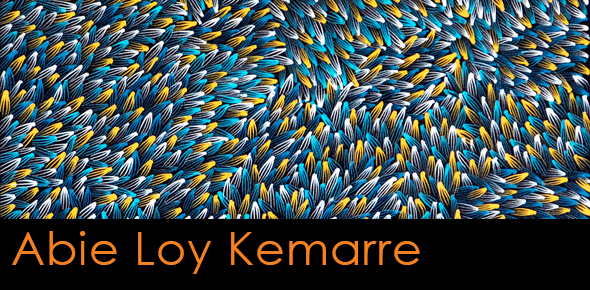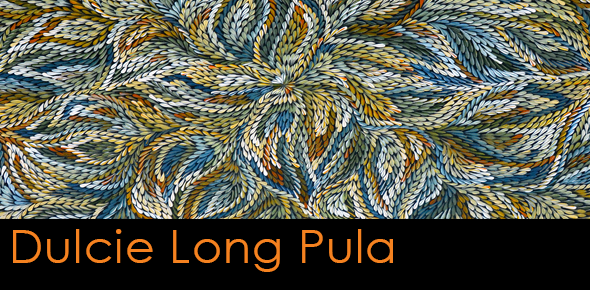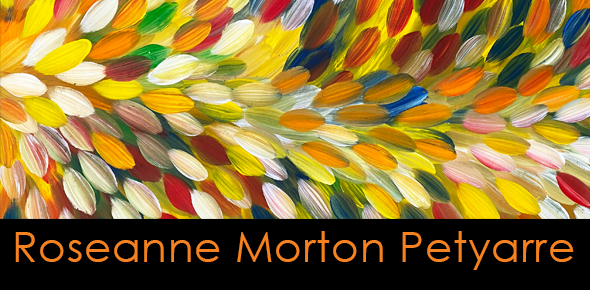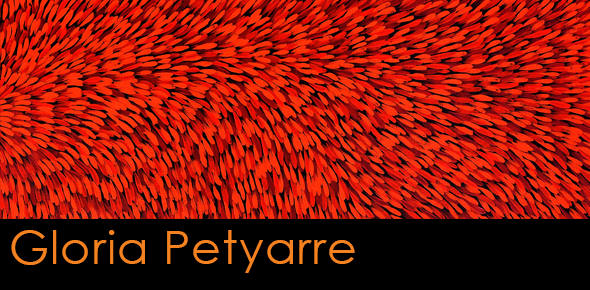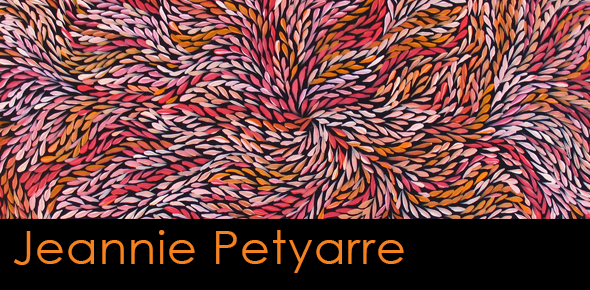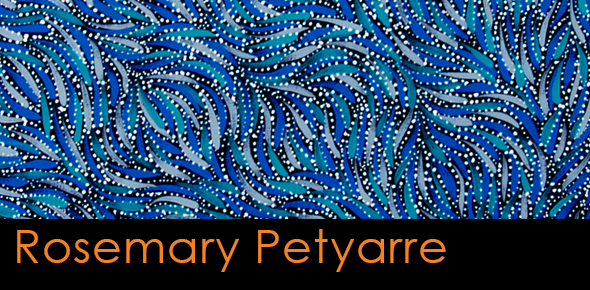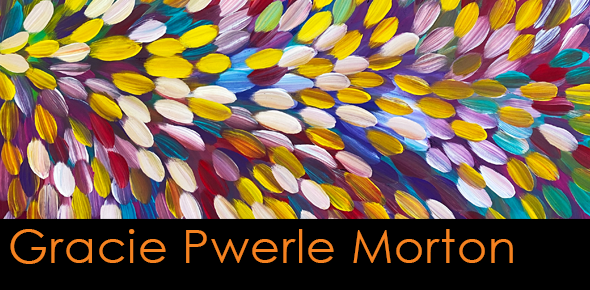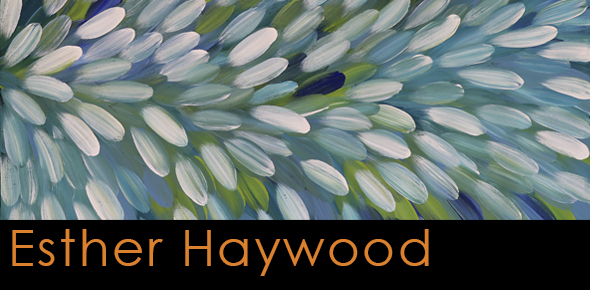Bush Medicine Leaves Paintings
The leaves of the important Kurrajong, or Kurrawong tree features in these iconic paintings which first stormed into the world's attention when Gloria Petyarre won the coveted Australian 'Wynne Prize' for landscape in 1999. The work in question was a large green and gold medicine leaf painting (entitled 'Leaves'). The leaves were very fine – each resulting from a dot with a tail that tapered off to nothing – but not just one leaf; a dense pattern of thousands of them, all seemingly flowing to the tune of some breeze swirling them in unison.
There are 30 species of the Kurrajong tree (Brachychiton) ranging from 4 to 30 metres in height, are believed to date back for up to 50 million years. In some species, their thick trunks can be a source of stored water, and the leaves, which are the subject of these paintings, range from 10 to 15cms long. The name Kurrajong comes from the Dharak language of the New South Wales Eora and Darug people and translates as 'fishing line' as fine strips of the bark of the tree were used for this purpose.
Women from the Anmatyerre region gather the leaves to be used in traditional bush medicines. The leaves are boiled and mashed with animal fats (emu or kangaroo) making a medicinal poultice or paste which can last for many months. The paste is then applied to the skin to heal a multitude of afflictions such as bites, wounds, skin infections, rashes, skin cancer and the like. The leaves are also steeped in hot water to make an infusion, or healing tea.
Although Gloria Petyarre is credited for the bush medicine leaf paintings style, it seems that her cousin Jeannie Petyarre also lays claim to being the first to paint this style. Whichever of the two was the initiator, the paintings of both these Aboriginal artists are very well executed but different to the trained eye. Gloria has gained the most recognition because of the Wynne Prize, and is regarded as one of Australia's leading female Aboriginal artists.
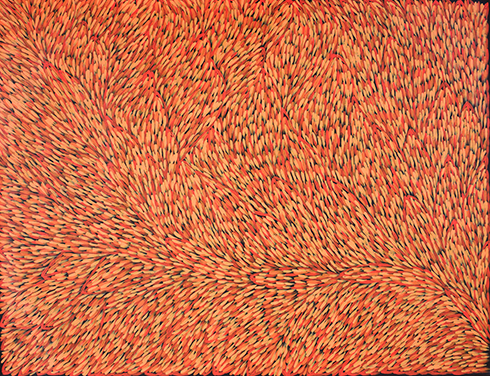
Gloria Petyarre - Bush Medicine Plant - GPEAR13108
Several other Indigenous artists in the family; sisters, daughters, grand daughters and nieces, now paint bush medicine leaf paintings, often with variations on the original theme, but all clearly emanating from the same brush stroke design.
People often remark that medicine leaf paintings are mesmerising as grass blowing in the wind, seaweed swirling with the tide, or of course, leaves being blown across the ground by a fitful breeze. Almost everyone, when they first see a medicine leaf painting, is entranced by the style, and it is highly popular, particularly resonating with citizens of the USA. In Australia and internationally, many doctors and other medical workers purchase medicine leaf paintings to hang in their consulting rooms, as an aboriginal artwork with medical or healing connotations.
Aboriginal artists who produce Medicine Leaf paintings

